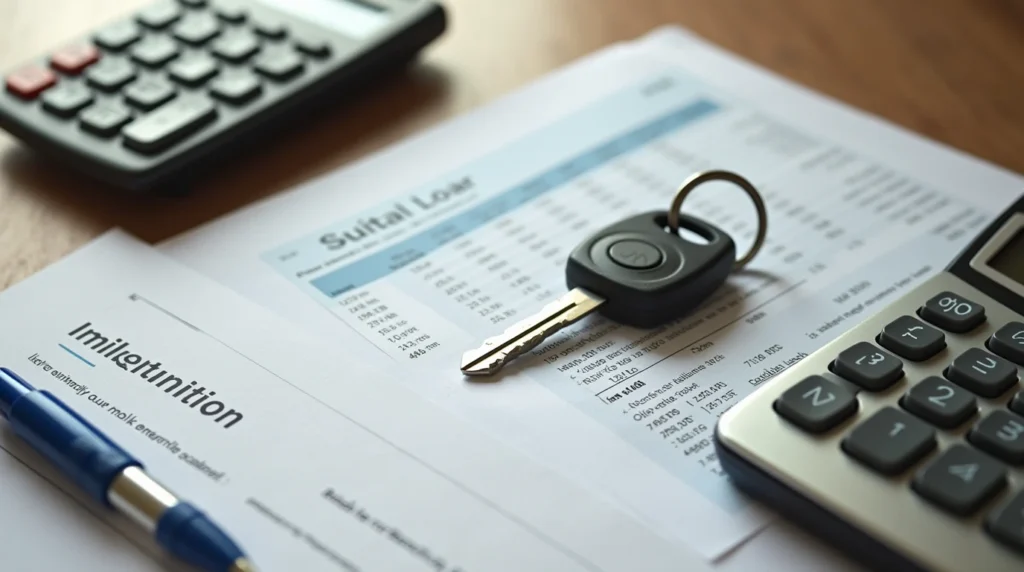Buyer’s remorse hits differently when it involves a $30,000 purchase with years of payment obligations ahead. If you’re wondering whether you can return a financed car back to the dealer after signing on the dotted line, you’re not alone. Whether it’s due to unexpected financial hardship, discovering the vehicle doesn’t meet your needs, or simply realizing you’ve committed to payments beyond your comfortable budget, many car owners find themselves searching for an exit strategy.
The reality of car financing agreements isn’t as flexible as returning an ill-fitting sweater to a department store. Once you drive off the lot, you’ve entered into a legally binding contract with significant financial implications. However, depending on your situation, timeline, and the specific dealer policies, you may have options available—though they often come with important caveats and potential long-term consequences.
In this comprehensive guide, we’ll explore whether returning a financed vehicle is possible, what alternatives exist, how to minimize financial damage if you need to exit your loan, and what rights you have as a consumer. By understanding the full picture of your car financing agreement, you’ll be better equipped to make decisions that protect both your financial health and your credit score for years to come.

The Reality of Car Financing Agreements
Understanding What You’ve Actually Signed
When you finance a car, the transaction isn’t simply between you and the dealership. You’ve entered into a complex financial relationship involving multiple parties. Can you return a financed car back to the dealer? To answer this question properly, you need to understand that the dealer likely isn’t your lender—unless you’ve arranged in-house financing directly through them.
Most car purchases involve a third-party lender like a bank, credit union, or finance company that provides the funds for your purchase. The dealer essentially sells your loan to this financial institution, which means your obligation is primarily to the lender, not the dealership. This distinction is crucial because it means the dealer typically doesn’t have the authority to simply “take back” your car and cancel your loan.
The paperwork you signed includes:
- Retail Installment Sales Contract: The legally binding agreement detailing your purchase terms
- Security Agreement: Documents that establish the vehicle as collateral for your loan
- Title Application: Paperwork filing for a title showing the lender as lienholder
Each of these documents creates legal obligations that aren’t easily reversed after the cooling-off period (if one existed) has passed.
The Myth of the Cooling-Off Period
One of the most persistent misconceptions about car purchases is the existence of a universal “cooling-off period”—a timeframe during which you can simply return the vehicle with no consequences. In reality, there is no federal law guaranteeing a cooling-off period for car purchases in the United States.
While the Federal Trade Commission (FTC) does provide a three-day right of cancellation for certain transactions, this protection specifically excludes auto purchases. Some states have implemented limited cooling-off provisions, but these typically:
- Require consumers to purchase a specific cancellation option at the time of sale
- Apply only to used car purchases
- Come with significant fees (often several hundred dollars)
- Must be exercised within a very short timeframe (usually 1-3 days)
Unless you purchased a specific cancellation option or are shopping in one of the few states with consumer-friendly return laws, the “no takebacks” rule generally applies the moment you drive off the lot.
Depreciation: The Immediate Value Drop
The often-cited statistic that a new car loses 20% of its value the moment it leaves the dealership isn’t just a saying—it’s a financial reality that directly impacts your ability to return a financed vehicle. This immediate depreciation creates what industry insiders call being “upside down” or “underwater” on your loan.
When you ask, “Can you return a financed car back to the dealer?” what you’re really facing is the mathematical challenge of a vehicle worth significantly less than what you owe on it. Even if a dealer were willing to take the car back (which is rare outside of specific return policies), you’d likely still owe thousands of dollars to cover the difference between your loan balance and the vehicle’s current market value.

Can You Actually Return a Financed Car?
Limited Scenarios Where Returns May Be Possible
Despite the general rule that car purchases are final, there are specific circumstances where returning a financed vehicle might be possible:
1. Dealer Return Policies
Some dealerships—particularly high-end luxury dealers or those looking to differentiate themselves in competitive markets—offer satisfaction guarantees or return policies. These programs typically:
- Have strict time limitations (usually 3-7 days)
- Restrict mileage (often to less than 250-500 miles)
- Require the vehicle to be in identical condition
- May involve restocking or processing fees
- Apply only to certain vehicle types or models
CarMax, for example, offers a 30-day return policy on their used vehicles, while Carvana provides a 7-day “test ownership” period. These policies are the exception rather than the rule, especially among traditional dealerships.
2. Vehicle Defects and Lemon Laws
If your vehicle has significant mechanical problems that remain unresolved after multiple repair attempts, you may have recourse under state lemon laws. While these laws vary by state, they generally require:
- The defect substantially impairs the vehicle’s use, value, or safety
- Multiple repair attempts have been made within a certain timeframe
- The vehicle has been out of service for a cumulative number of days (typically 30+)
Successful lemon law claims can result in a replacement vehicle or a refund of your purchase price, effectively allowing you to “return” the defective car. However, this process involves legal proceedings and documentation requirements that go beyond simply returning the vehicle to the dealer.
3. Dealer Fraud or Misrepresentation
If you can prove the dealer engaged in fraudulent practices or material misrepresentation during the sale, you may have grounds to rescind the contract. Examples include:
- Falsely advertising the vehicle’s features or condition
- Manipulating odometer readings
- Failing to disclose significant accident history or damage
- Misrepresenting financing terms
These situations generally require legal assistance and documentation of the deceptive practices, making them a challenging but viable path in cases of clear dealer misconduct.
Voluntary Surrender: The Last Resort Option
When people ask, “Can you return a financed car back to the dealer?” they’re sometimes considering voluntary surrender or voluntary repossession—essentially turning in the keys and walking away from the obligation.
While technically possible, voluntary surrender should be considered only as a last resort after exploring all other options. Here’s why:
- Credit Impact: Voluntary surrender appears on your credit report similarly to repossession, significantly damaging your credit score (often by 100+ points)
- Deficiency Balance: You remain responsible for the difference between what the lender recovers by selling the car and what you owe, plus repossession and auction fees
- Collection Activity: The deficiency balance can be sent to collections, leading to potential lawsuits, wage garnishment, or tax refund interception
- Long-term Consequences: The negative impact can affect your ability to obtain auto financing for 5-7 years
Before considering this drastic step, it’s essential to understand there are usually better alternatives that can minimize financial damage while addressing your need to exit the loan.

Better Alternatives to Returning a Financed Car
Selling the Vehicle Privately
Selling your financed car privately often represents the best financial outcome, as private party sales typically yield 10-15% more than dealer trade-ins. However, selling a car with an outstanding loan involves additional steps:
- Contact your lender to request the payoff amount and understand their process for releasing the lien
- Determine your car’s value using resources like Kelley Blue Book, Edmunds, or NADA guides
- Calculate the difference between your payoff amount and potential sale price
- If underwater, prepare to cover the shortfall out of pocket at the time of sale
- Arrange for secure payment and lien transfer with your lender and potential buyer
Many lenders will work with you to facilitate the sale by providing instructions for handling the transaction securely. Some may direct the buyer to make payment directly to them, after which they’ll release the lien and transfer ownership.
Trading In at Another Dealership
If selling privately seems overwhelming, trading your vehicle in at another dealership—especially when purchasing a less expensive replacement—can provide a streamlined exit strategy:
- Research your car’s trade-in value to enter negotiations informed
- Be upfront about being underwater on your current loan
- Compare offers from multiple dealerships to find the best trade-in value
- Consider more affordable vehicle options to reduce your new monthly payment
- Read the fine print before rolling negative equity into a new loan
The primary drawback to this approach is that dealerships typically offer less than private party value, and rolling negative equity into a new loan can perpetuate the cycle of being underwater. However, if you trade for a vehicle that better matches your budget and needs, this can be a practical solution.
Refinancing for More Manageable Payments
If your primary concern is the monthly payment rather than the vehicle itself, refinancing might provide the relief you need without the complications of returning or selling the car:
- Shop for better interest rates through banks, credit unions, and online lenders
- Consider extending the loan term (while recognizing this increases total interest paid)
- Look for cash-back refinancing options if you need immediate financial relief
- Negotiate with your current lender for hardship options before refinancing
Refinancing works best when your credit score has improved since the original purchase or when interest rates have declined generally. However, even with the same credit profile, switching to a lender with more competitive rates can sometimes lower your payment.
Lease Takeover or Loan Assumption
Though less common with traditional auto loans, finding someone to assume your payments can be possible in certain situations:
- Check if your loan is assumable (many aren’t, but some lenders permit it with credit approval)
- Consider services like SwapALease or LeaseTrader if you have a lease rather than a loan
- Seek qualified buyers who meet the lender’s credit requirements
- Get everything in writing to ensure proper transfer of financial responsibility
The primary benefit of loan assumption is the potential for a clean break without credit damage, though finding a willing and qualified buyer can be challenging, especially if you’re significantly underwater.

Legal and Financial Implications to Consider
Credit Score Impact of Different Options
Your approach to exiting a car loan can have dramatically different impacts on your credit profile:
| Exit Strategy | Potential Credit Impact | Recovery Timeline |
| Selling privately | Minimal to none (if loan is properly paid off) | Immediate |
| Trading in | Minimal (may show as new inquiry and increased debt) | 3-6 months |
| Refinancing | Short-term dip (new inquiry), potential long-term benefit | 6-12 months |
| Voluntary surrender | Severe negative impact (similar to repossession) | 5-7 years |
| Repossession | Severe negative impact | 7+ years |
Understanding these implications is crucial when deciding whether you can or should return a financed car to the dealer, as the wrong choice could impair your financial flexibility for years to come.
Tax Implications of Loan Forgiveness
If your lender forgives part of your auto loan balance (which occasionally happens in voluntary surrender situations), the IRS may consider that forgiven amount as taxable income. This can create an unexpected tax liability through a 1099-C form, essentially requiring you to pay income tax on debt that was canceled.
Before accepting any settlement that involves loan forgiveness, consult with a tax professional to understand the potential implications for your specific situation.
State-Specific Repossession and Deficiency Laws
The legal framework governing car loans, repossession, and deficiency balances varies significantly by state. Some states offer greater consumer protections than others:
- Anti-deficiency states like California restrict lenders’ ability to pursue deficiency judgments in certain situations
- Right to cure states require lenders to provide a period during which you can catch up on payments before repossession
- Repossession notice requirements differ widely, with some states mandating detailed disclosures
Understanding your state’s specific laws can help you navigate the process of addressing an unaffordable car loan with greater confidence and protection.

Real-World Example: Michael’s Car Return Journey
Michael purchased a new SUV with a $45,000 loan at 6.5% interest. Six months later, he lost his job and found himself unable to maintain the $750 monthly payments. After researching his options regarding whether he could return his financed car to the dealer, he discovered his vehicle had depreciated to a market value of approximately $36,000, leaving him $9,000 underwater.
Rather than pursuing voluntary surrender, Michael:
- Listed his vehicle for private sale at a competitive price
- Found a buyer willing to pay $37,500
- Used $7,500 from his emergency fund to cover the difference between the sale price and his payoff amount
- Arranged the transaction through his lender’s third-party service
- Purchased a reliable used vehicle for $12,000 cash from the remaining emergency funds
While the process required significant upfront capital, Michael preserved his credit score and avoided the long-term financial damage of a deficiency balance. Within 18 months, he had rebuilt his emergency fund and was in a stronger financial position than if he had simply surrendered the vehicle.

Conclusion: Making the Right Choice for Your Financial Future
The question “Can you return a financed car back to the dealer?” rarely has a simple yes or no answer. While true returns are uncommon outside specific dealer policies or legal situations involving defects or fraud, you do have options for addressing an unaffordable auto loan.
The best approach depends on your specific circumstances:
- If you’re experiencing temporary financial hardship: Contact your lender about hardship programs before considering more drastic measures
- If the car no longer meets your needs: Explore private sale or trade-in options to minimize financial impact
- If payments are consistently unaffordable: Consider refinancing, downsizing to a less expensive vehicle, or negotiating with your lender
Remember that short-term convenience often comes with long-term consequences. Taking the time to explore all available options and potentially making short-term sacrifices can protect your credit profile and financial health for years to come.
Before making any decision, consult with financial advisors, research your state’s specific laws, and prioritize solutions that allow you to meet your obligations while protecting your financial future. With careful planning and informed decisions, you can navigate even challenging auto finance situations successfully.
FAQ: Returning a Financed Car
Q: Is there a cooling-off period after purchasing a car?
A: Generally, no. Unlike some other major purchases, cars typically don’t come with a federally mandated cooling-off period. Some states offer limited return rights if you purchase a specific cancellation option at the time of sale, but these are exceptions rather than the rule.
Q: Will voluntary surrender hurt my credit less than repossession?
A: While voluntary surrender shows you cooperated with the lender, both appear as significant negative events on your credit report and can lower your score by 100+ points. The primary difference is that voluntary surrender may avoid additional fees associated with forced repossession.
Q: Can I return a car if I can’t afford the payments?
A: Most dealers won’t simply take back a car because you can’t afford it. Better options include requesting loan modification from your lender, refinancing, selling the car privately, or trading it in for a less expensive vehicle. These approaches typically have less severe financial consequences than surrender.
Q: What happens if my car is worth less than what I owe?
A: This is called being “underwater” or “upside down” on your loan. If you need to sell or trade the vehicle, you’ll need to cover the difference between the car’s value and your loan balance out of pocket, or in some cases, roll that negative equity into a new loan (though this is generally not recommended).
Q: Can I return a car if it has mechanical problems?
A: If your vehicle has significant mechanical issues that cannot be fixed after multiple repair attempts, you may have recourse under your state’s lemon laws. These laws typically require that the problems substantially impact the car’s safety, value, or use, and that the dealer has been given reasonable opportunity to fix them.



